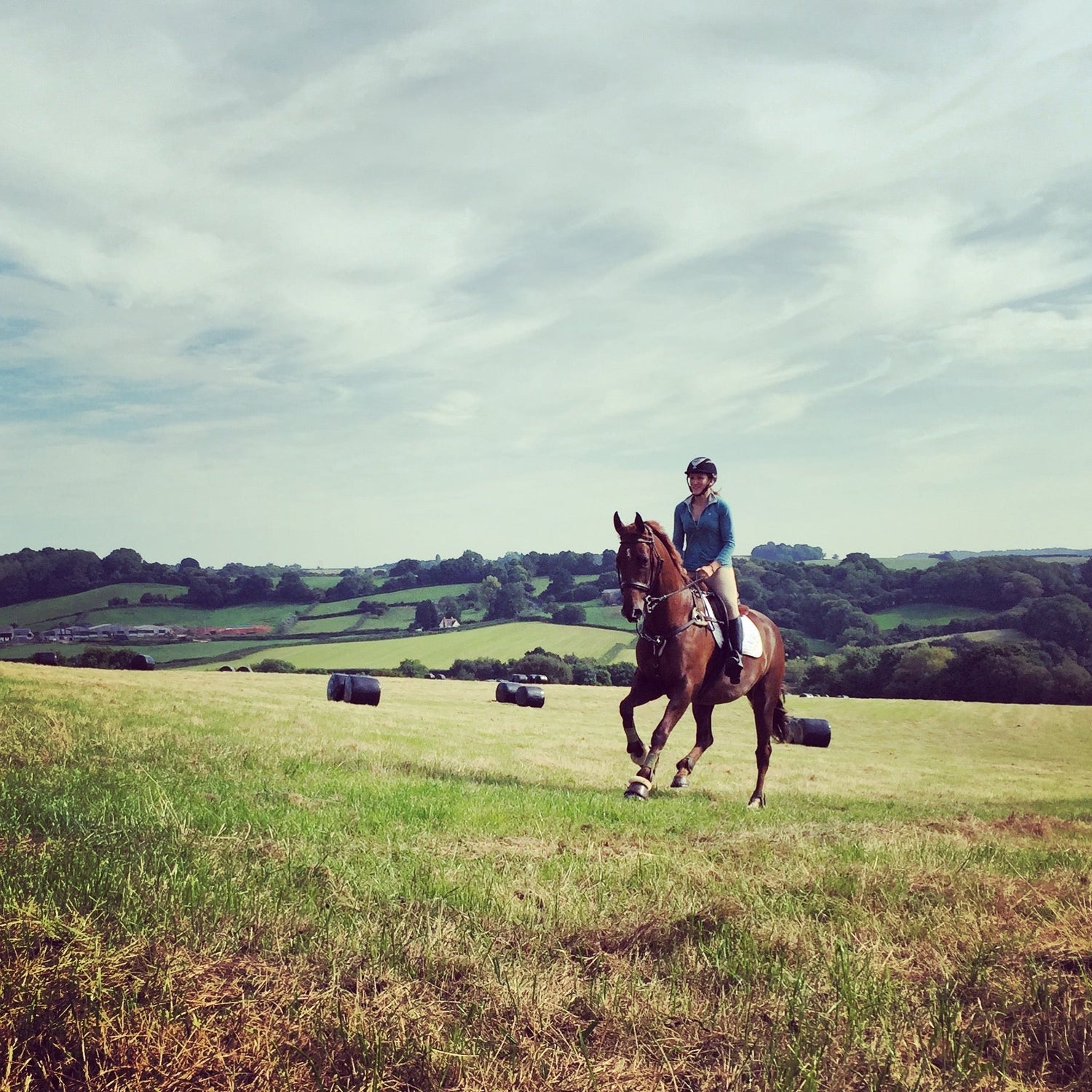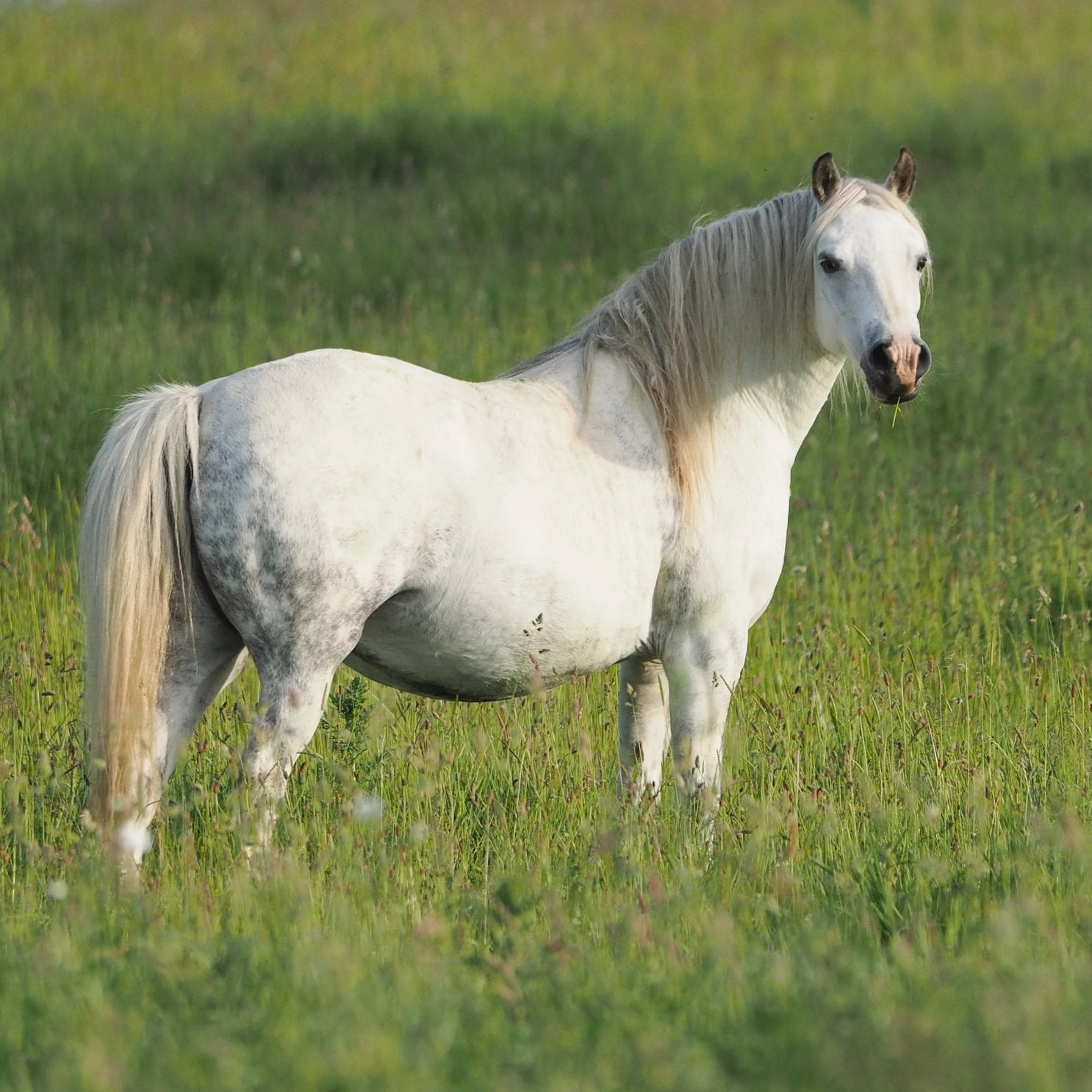The challenges of keeping horses fit with Hard Ground
Understanding the risks of a dry summer, and how to mitigate them.
With another hot, dry spring behind us we, as equestrians, are having to adapt to the challenge of climate change and how that influences management of our horses and ponies. From a dietary point of view it presents challenges with availability of good grazing, and we’re starting to see impact on harvest yields for winter forage too. But what about exercise? Is hard ground going to call time on our summer riding fun? Let’s consider the following saying, attributed to dressage trainer and author, Jane Savoie:
“There are no poor surfaces, just poor use of surfaces.”
Exercise and fittening
In some ways hard baked ground can be considered like riding on the road. Only with a road surface it is generally even going, without the risk of irregular ruts and lumps that would be encountered with a natural surface hardened by lack of rain. We know some lower limb injuries are increased with excess hard ground, and that risk is greater still with irregular surfaces. So, what should we be aware of, and are there ways we can actually utilize hard ground to our horse’s advantage?
Pros
- Hard ground is useful for conditioning bone fitness, with bone being one of the tissues most responsive to exercise. This may be particularly useful when building or returning a horse to full fitness or simply maintaining fitness through the season. However, care should be taken as to the gait. Research of wild and feral horses find they do routinely cover significant distances during the day, but predominantly at walk.
- Using some hard ground in exercise provides variety, which helps with overall conditioning and proprioception.
- Conditioning – research finds there is actually greater loading of the SDFT (superficial digital flexor tendon) on sand compared to road. Though that may not also be true of hard natural ground due to its variations.
- Proprioception - their awareness of their body’s position and movements. Put simply, a horse only ever exercised in the school is likely to end up as clumsy.
- Horses are less likely to lose shoes on roads or hard ground compared to deep, boggy soils. Plus, as horse owners, there are certainly advantages to not having them come home covered in mud too!
Cons
- Traditionally it was thought that roadwork, particularly increasing the amount of trot work, would help with hardening tendons. However, that has now largely been disproved. Tendons can respond to suitable exercise at an early age, but once skeletally mature tendons are far less likely to benefit. Now we understand that excessive trotting can be detrimental, so whether roadwork or baked ground, keep periods of trot to a few minutes maximum.
- Concussive forces increase through the joints with hard ground, as does the risk of slipping. Therefore, just as we wouldn’t canter or jump on the road, neither should we on baked fields or natural ground.
Which surface?
Hard ground: Good for bone health, and range of motion in the joints – particularly in the carpus (knee). Care should be taken to ensure predominantly done at walk.
Soft ground: Takes more energy, uses more muscular effort, meaning it can be great for fitness but shouldn’t be overdone. A good quality soft footing can minimize impact from peak forces through the limb, such as when jumping or working at the faster speeds.
Hill work: Great for the cardiovascular system and strength training, particularly over the hindquarters, back and abdominal muscles. Whilst working downhill improves proprioception, coordination and agility.
Hacking: Ideal for providing a range of surfaces for fitness health, as well as simply delivering some variety for your horse’s mental health.
“Include work on a variety of surfaces – Get out of the sand pit!” Hilary Clayton (2024). Dressage training and conditioning. KER Conference, Florida
Competing
When it comes to competing, the risks of hard ground can cover a range of sports. From relatively intense high speed, high impact competition, like eventing or showjumping, to lower impact but longer duration, such as endurance. For those needing to go across country at speed, such as in the eventing cross-country phase, the risks are particularly high. Due to the current hard ground, we’re seeing an impact on competition venues because of that. The availability of aerating and watering equipment is still relatively low for many venues, and 2025 has already seen a number of event cancellations due to hard ground.
Remember, the ultimate responsibility for your horse’s soundness is with you. If you arrive at a venue and you feel the ground is too hard then your best course of action is simply to box up and head home. There will always be another day.
Tips for dealing with Hard Ground
- Feed NAF Five Star Superflex or Superflex Senior daily to support strong, healthy joint structures.
- Introduce new surfaces gradually, using the slower gaits and short periods of time.
- Keep trotting on roads to a minimum, and adjust off-road speeds to suit the ground conditions.
- Apply NAF Ice Cool Gel after exercise to soothe and refresh the legs.
- Don’t forget daily NAF Profeet Farrier Solution to maintain strong hoof health.
References
- Crevier-Denoix N et al. Comparison of superficial digital flexor tendon loading on asphalt and sand in horses at the walk and trot. The Veterinary Journal. Volume 198, Supplement 1. 2013. e130-e136,
- Firth EC. The response of bone, articular cartilage and tendon to exercise in the horse. J Anat. 2006 Apr;208(4):513-26.
- Hampson BA, de Laat MA, Mills PC, Pollitt CC. Distances travelled by feral horses in 'outback' Australia. Equine Vet J Suppl. 2010 Nov;(38):582-6
- Horse and Hound - News - Hard Ground
- Horse Journals - How does Footing Affect Fitness in Horses?
Written by: Kate Hore, Head Nutritionist. RNutr (Animal), R.Anim.Technol (Cert), BSc(Hons). – Find out more about Kate and out Technical Team HERE.



